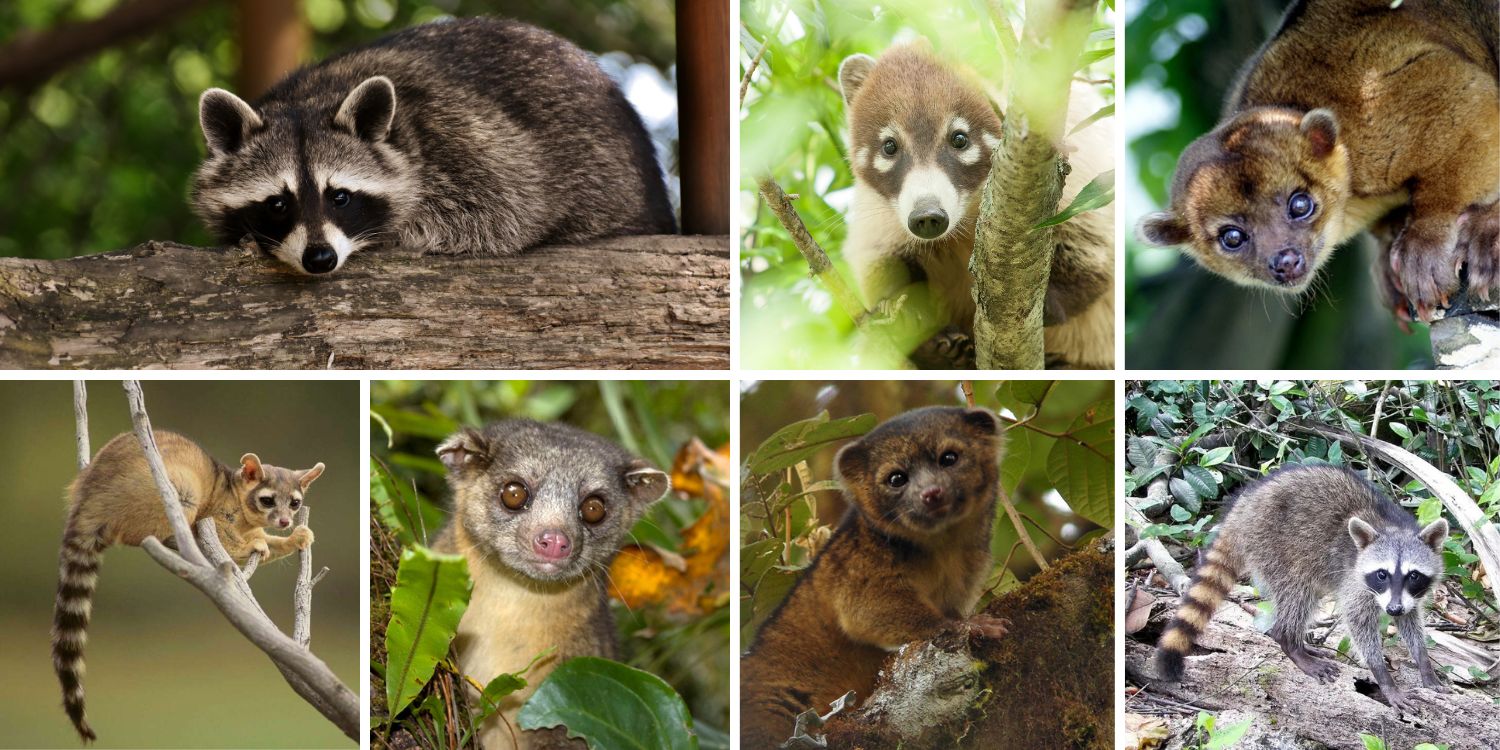
When you think of raccoons, you probably picture the clever, trash-raiding “bandits” of backyards and campsites. But did you know raccoons have a whole extended family of quirky, tree-climbing, bug-hunting cousins?
Welcome to the world of the Procyonidae family—a group of mammals native to the Americas, known for their intelligence, adaptability, and surprise factor. Let’s meet some of the most fascinating members of the raccoon clan.
1. The Raccoon (Procyon lotor)
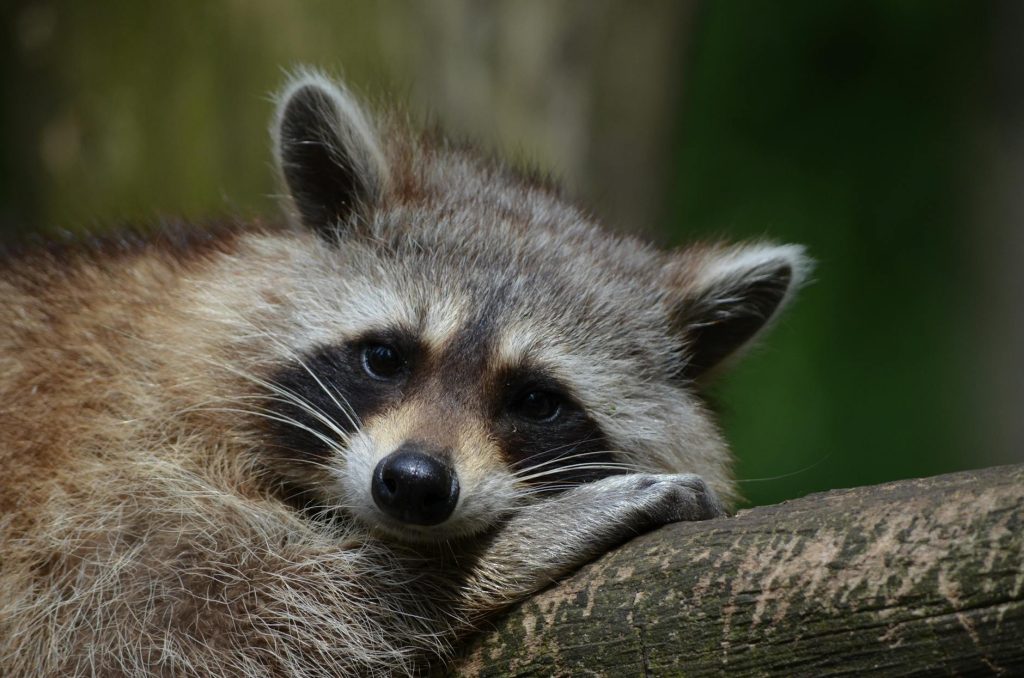
Range: North America
Famous for: Its black “mask,” nimble paws, and problem-solving skills.
Fun Fact: Raccoons can open jars, unlatch cages, and even remember solutions to puzzles for years. They’re one of the most adaptable mammals in urban environments.
2. The Coati (Nasua spp.)
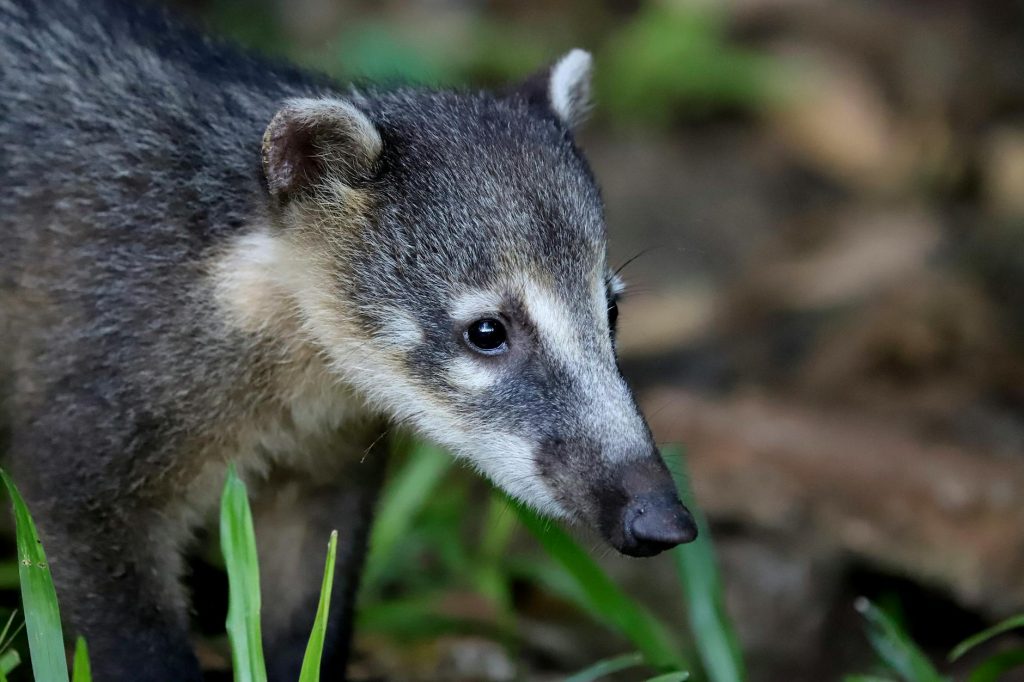
Range: Central and South America, parts of the southwestern U.S.
Famous for: Long, flexible snouts and their highly social female-led bands.
Fun Fact: Adult males go solo and are often called coatimundis. Coatis use their snouts like mini metal detectors, sniffing out insects and snacks in the soil.
3. The Kinkajou (Potos flavus)
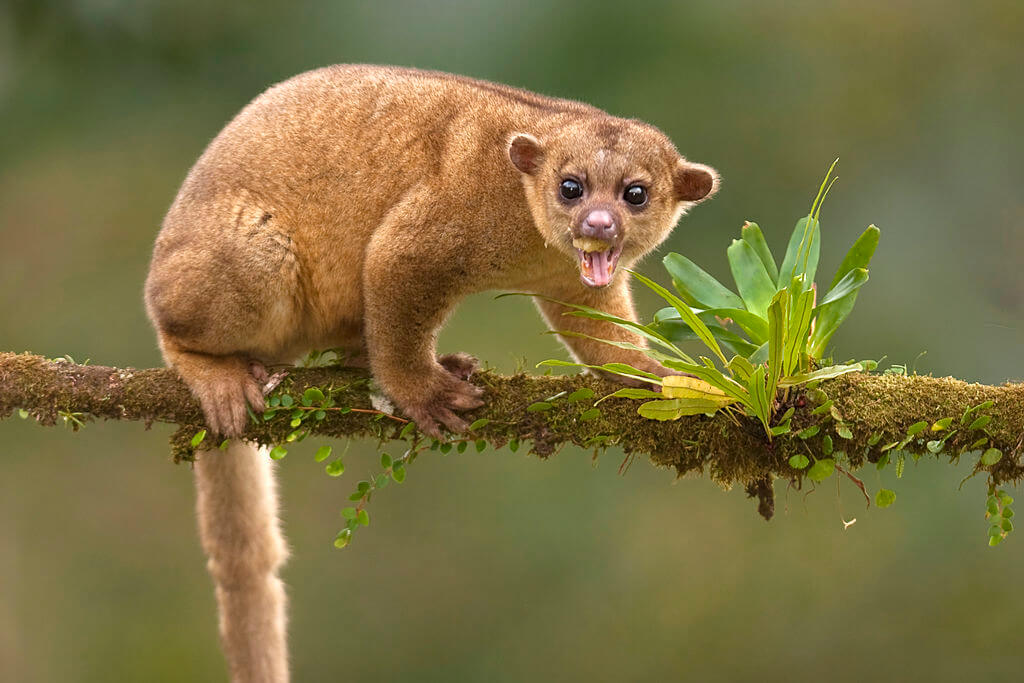
Range: Central and South American rainforests
Famous for: A prehensile tail and a serious love of fruit and nectar.
Fun Fact: Often called “honey bears,” kinkajous use their long tongues to reach deep into flowers and fruit. Despite their cuteness, they’re nocturnal and rarely seen in the wild.
4. The Ringtail (Bassariscus astutus)
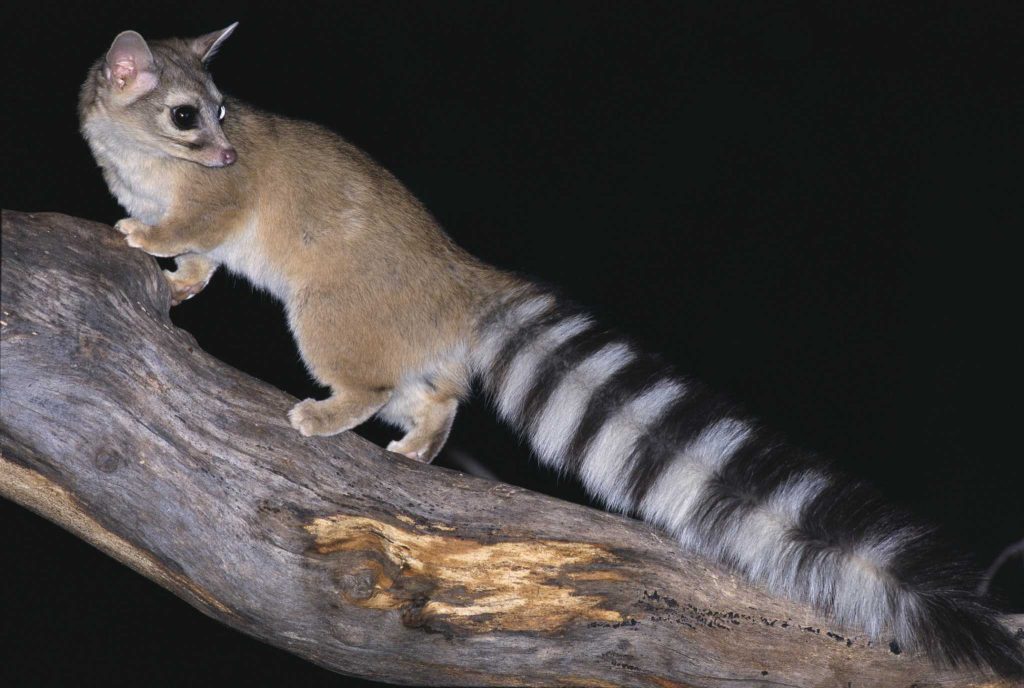
Range: Southwestern U.S. and Mexico
Famous for: Big eyes, striped tail, and acrobatic tree-climbing.
Fun Fact: Once domesticated by miners to control pests—hence the nickname “miner’s cat.” Despite the feline name, it’s firmly in the raccoon family tree.
5. The Olingo (Bassaricyon spp.)
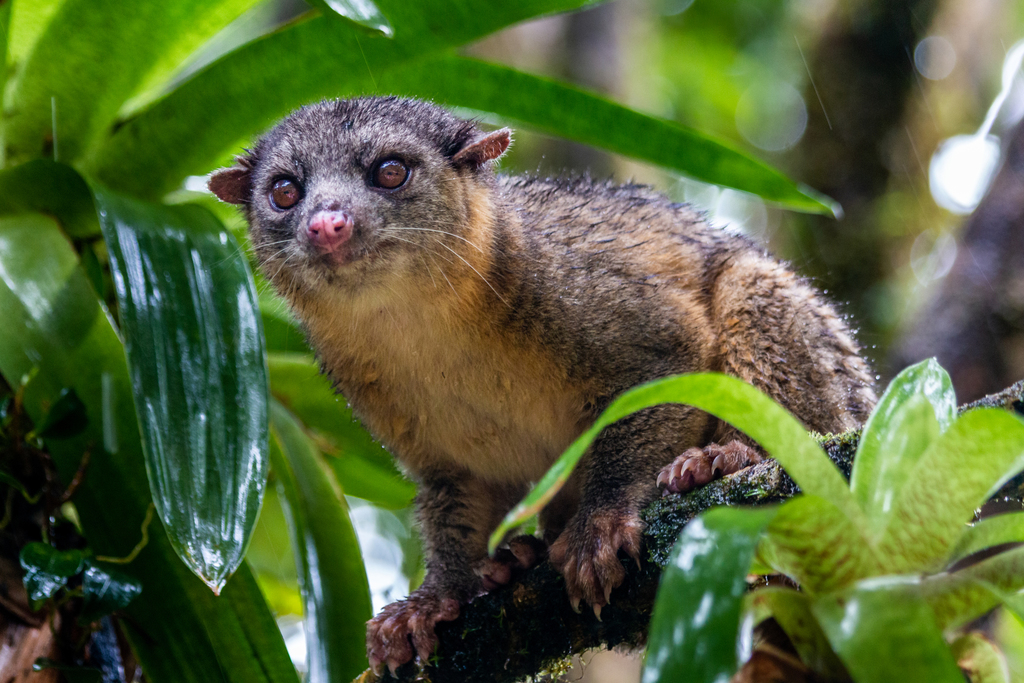
Range: Central and northern South America
Famous for: A bushy-tailed, elusive life in the treetops.
Fun Fact: Olingos are sometimes confused with kinkajous but are leaner, more cat-like, and far less social. They’re rarely seen and even more rarely studied.
6. The Olinguito (Bassaricyon neblina)
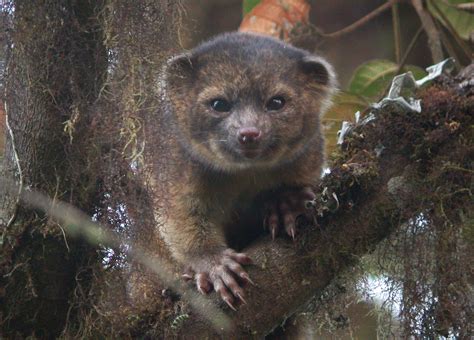
Range: Cloud forests of the Andes
Famous for: Being the first new carnivorous mammal discovered in the Western Hemisphere in over 30 years (2013!).
Fun Fact: It looks like a cross between a teddy bear and a house cat, but it’s a real, wild animal with a taste for figs and a love of cloud-forest canopies.
7. The Crab-Eating Raccoon (Procyon cancrivorus)
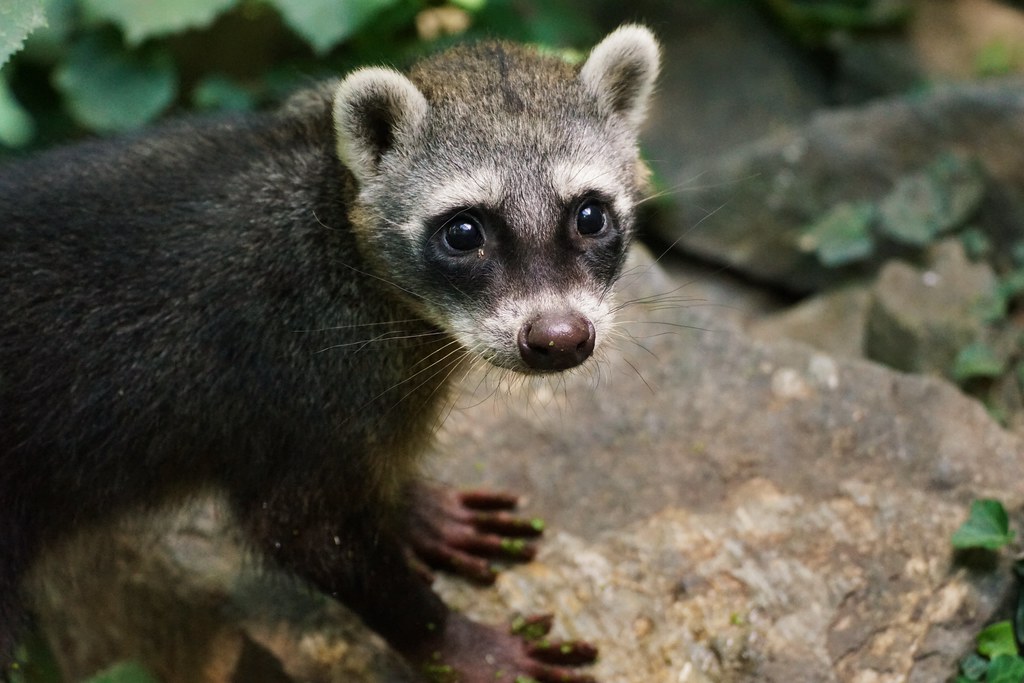
Range: Central and South America
Famous for: A semi-aquatic lifestyle and love of crustaceans.
Fun Fact: While similar in appearance to the common raccoon, this cousin thrives in mangroves and wetlands and feasts on crabs, frogs, and aquatic insects.
Family Traits: What Makes a Procyonid?
While they vary in size, shape, and behavior, all members of the raccoon family share some key traits:
- Omnivorous diets with lots of curiosity
- Highly dexterous paws
- Great climbers
- Remarkable intelligence
Why They Matter
From the cloud forests of the Andes to the the woods, wetlands, suburbs, parks, and cities throughout the continental United States, the raccoon family fills important roles in ecosystems as seed dispersers, scavengers, and insect controllers. Many are under threat due to habitat loss, climate change, and illegal pet trade.
Final Thoughts
The next time you see a raccoon rifling through a trash can, remember: that little troublemaker has a wild and fascinating family spread across two continents. Whether it’s the mysterious olinguito or the honey-loving kinkajou, the raccoon family is full of surprises—and worthy of our admiration and protection.
Deep dives on each of these amazing animals:
- Meet the Raccoon: The Trash Panda, Nature’s Clever Masked Bandit
- FAQ: What Is a Coati? Or Is It Coatimundi?
- Meet the Kinkajou & FAQ: Top 11 Questions About Kinkajous
- Meet the Ringtail: The Cat-Like Creatures of the Southwest
- Meet the Olingo: The Jungle’s Secretive Acrobat
- Meet the Olinguito: The Cloud Forest’s Tiny Mystery
- Meet the Crab-Eating Raccoon: Coastal Bandit with a Taste for Seafood
- Bonus: What Is a Tanuki? Meet the Japanese Raccoon Dog
Disclaimer: This blog post is for edutainment purposes only and may not be entirely accurate.






